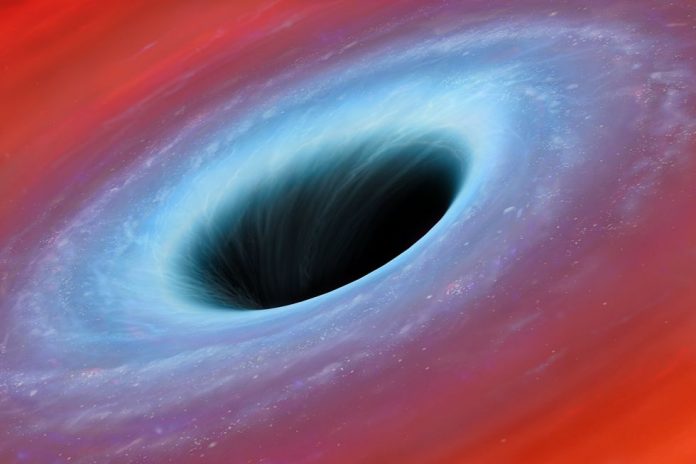Table of Content
What does a sound of a black hole like? It’s both “creepy” as well as “ethereally gorgeous,”. Hence, according to people who have listened to an audio clip that was posted via Twitter on behalf of NASA.
NASA’s U.S. space agency tweeted the tweet. Importantly, as an encapsulated sonification of the black-hole at the heart of a galaxy cluster. Known as Perseus that is located about 240,000 light-years from Earth. The sounds that were detected in the area nearly two years back. Obviously, were “extracted and then made heard” to the public. That is, for the first time in this year as per NASA.
The video, with a duration of 34 seconds, caused a stir on social media. Thus, with people shocked at the thought. That even the sound of an unsettling, guttural scream could get out of a black hole.
However, the notion that there isn’t any noise in space an “popular myth,” the agency said. While the majority of space is empty. Furthermore, there is no way for sound waves to pass through the galaxy cluster “has massive amounts of gas. The gas that cover the thousands or hundreds of galaxies that are within it. Thus, providing a space for sounds to move through,” the agency explained.
The misconception that there is no sound in space originates because most space is a ~vacuum, providing no way for sound waves to travel. A galaxy cluster has so much gas that we’ve picked up actual sound. Here it’s amplified, and mixed with other data, to hear a black hole! pic.twitter.com/RobcZs7F9e
— NASA Exoplanets (@NASAExoplanets) August 21, 2022
The video that NASA called”Black Hole Remix”. This was first made public in early May in conjunction to NASA’s Black Hole Week. However, a tweet on Sunday by the NASA exoplanets group really shows at the clip. Furthermore, resulted in the video being watched over thirteen million times.
These sound waves were first discovered in 2003. When, in the course of 53 hours of observation Researchers. That is, from NASA’s Chandra X-Ray Observatory “discovered that the pressure waves emitted by the black hole created ripples in the hot gas. Ironically, which could be transformed into notes.”
Humans couldn’t even hear that note due to its frequency being too low. It was which is equivalent to a B flat. Hence, which is 57 octaves lower than that middle note on an instrument. According to NASA. Astronomers at Chandra created a new sound and increased the frequency by between 57 and 58 octaves. “Another way to describe this is that they’re hearing 144 quadrillion. In addition to this, 288 quadrillion times greater than the original frequency” NASA said.
Incredible Jupiter images discovered via NASA’s James Webb telescope
Kimberly Arcand, the principal investigator for the sonification research project. Thus, stated that the first time she was able to hear the sound in late 2021. Also, described it as “a gorgeous Hans Zimmer score with the low-key level set extremely high” She jumped into excitement.
“It was a fantastic illustration of the thoughts that were in my head,”. The visualisation scientist and lead for emerging technology. Importantly, at Chandra spoke to The Washington Post. It was also a “tipping level” that influenced the entire sonification process. That is, all in the sense that it “really stimulated people’s imaginations,” she said.
It also hints at the future of research. “The notion that there are massive black holes scattered. That is, throughout the universe … emitting amazing songs is a exciting thing,” Arcand added.
A Deep Voice from Deep Space:
Experts have warned that the sound that NASA’s remix produces. Isn’t exactly what you would hear when you stood next to a black-hole. Human ears would not “be sufficiently sensitive to detect the sound waves” Michael Smith. The professor of astronomy at the University of Kent in England explained to The Post. “But they’re present, they’re of the appropriate frequency. Furthermore, if we amplified them … we’d then be able to detect this,” Smith said. He compared it to a radio which “you raise the volume. Significantly, so that the volume is greater and then you be able to hear the sound.”
Arcand explained that the idea took form during the outbreak of coronavirus. She was trying to convert the X-ray radiation. The radiation that captured from Chandra’s telescope orbiting to images. Furthermore, also making 3D models that could be printed in order to assist people. Thus, with poor sight or even no access to the information. After the pandemic struck the country. For obvious reasons, this program was hard to maintain remotely.
Together with her colleagues she decided to explore something completely new: sonification. A process which whereby you translate huge data into sounds. The group included experts who were blind and motivated Arcand “to think different”. Hence, regarding the importance of translating data sets that are complex into the sound.
In the 2003 data from the Perseus galaxy cluster. She and her colleagues were able to identify the characteristics that the waves caused by pressure. They also tried to determine the sound they could make. Furthermore, then increase their frequency.
The agency’s decision to release information about the “re-sonification” of the almost two-decade-old data. Hence, is a part of the agency’s efforts to utilise social media. Obviously, to convey the most complex scientific discoveries in simple English. That is, to the millions of people who follow it.
Through an alliance through a partnership Twitter. The agency NASA discovered that “while its users enjoyed stunning images of space. Also, behind-the-scenes glimpses into missions there was a crowd of people who wanted understand. Hence, what the sound of space was like also,” the company wrote in a press release.
A few experts suggested that the clip was confusing. Due, to the fact that it made it appear as if the sound “was something you could hear in the presence of a person.” Chris Lintott, a professor of astrophysics and astronomy at the University of Oxford, wrote on Twitter. Like if you had an audio recording device. That was directly translating the sound of the galaxy’s cluster of stars to Earth.
“Sonification of data is a lot of fun. Also, it can be beneficial particularly for people who aren’t in a position to view images. It can also be employed to make things appear more complex than they really are. Hence, as in this case,” Lintott added.
However, Smith who is professor at the University of Kent professor. Stated that “it’s completely reasonable to believe. The existence of sound waves within the galaxies cluster. Further, if we were in the galaxy cluster we would be able to detect the sound waves. Obviously, if we had sufficient ears.”
However, he admitted “these galaxies clusters so far away. That they must assume a number of things to translate it into the kind of sounds we could hear. Thus, in the event that we were there.”
Arcand said that she could understand the arguments from certain corners. That sonification can be seen as simplifying an intricate process. Particularly, since the mix of heat, pressure and gas. That generates sound waves inside the Perseus galaxy cluster is unique to the particular setting. However, the benefit of sonification, she added is that it has made the “question things in a variety of ways.”
“It’s an amazing depiction of the science. Hence, according to me and has a very disturbing audio!” Carole Mundell, director of astrophysics at the University of Bath in England said to The Post via email.
Supermassive black holes seen in the very centre of our galaxy:
The program, as well as NASA’s tweets on it. Seem to have fulfilled the mission of NASA in communicating its research. Furthermore, science with the general public in a more conversational manner. However, some people weren’t enthusiastic, about the remixed music from the dark hole.
On the Internet, people were excited and scared by the event. Also, made fun analogies to Lord of the Rings and Silent Hill series.
Some were entertained by the audio clip. Thus, putting the image of an intergalactic puppy on the clip. Alternatively, remixing it using the idea of re-creating a sound that could be closest to that of a mother.
“I have confirmed that the noise from the black hole Nasa released. This, is indeed the noise of the devil,” one dark-humoured Twitter user wrote. Another user wrote: “New genre just dropped: Cosmic Horror.”


